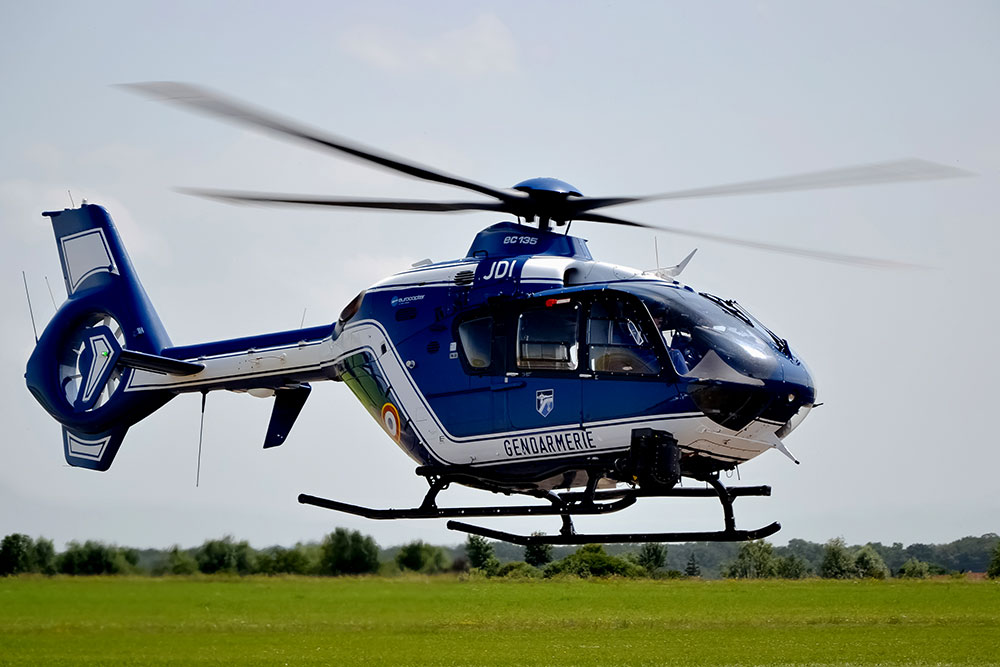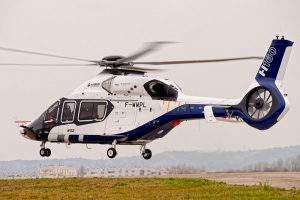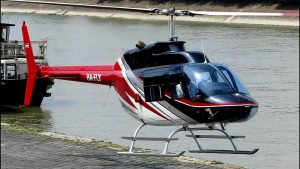In the mid-1980s, when MBB (Messerschmitt-Bolkow-Blohm) began development of its BO 108, it had no idea how successfully the helicopter’s form would let it perform many missions.
Initially, the BO 108 was intended as a flight test vehicle to investigate advanced systems. The flight test regime was designed to explore the technical and economic potential of advanced rotor technology, anti-resonance isolation systems, composite structures, cockpit installations and engine integration. Initially, the BO 108 was powered by a pair of Allison 250 C20-R engines.

Second BO 108, this one powered by a pair of Turbomeca TM319-1B Arrius engines, was introduced in 1991. At the time, the design featured a conventional tail rotor, but the BO 108 was soon fitted with a fenestron (a shrouded tail rotor) that had become a popular design feature on Aerospatiale’s helicopters. The merging of MBB and Aerospatiale technology in the BO 108 was a result of major corporate shuffling that occurred when Germany’s Daimler Chrysler Aerospace, which had acquired MBB, merged with Aerospatiale-Marta of France in 1992 to become Eurocopter, which in turn was a wholly owned subsidiary of EADS, the second largest aerospace and defense company in the world.

The BO 108, an adored stepchild of the corporate marriage, was refined and renamed the EC135 and eventually would become the first helicopter of the merged aerospace giant. In 1994, a pair of preproduction prototypes, one powered by Arrius 2B engines and the other by Pratt & Whitney of Canada PW206B engines, entered the flight test program. The following January, in 1995, the EC135 was introduced at the Helicopter Association International annual convention in Las Vegas.

The flight test program amassed more than 1,600 flight hours before European JAA certification was granted in June of 1996, an impressive short 18 months after its maiden flight; FAA approval followed by the end of that July, and deliveries began immediately afterward. That same year the EC135 was honored with the Flight Aerospace Industry Award for the most innovative helicopter. Within a year of certification, Eurocopter had sold 100 EC135s, and by the time the 100th EC135 was delivered, to the Bavarian police force, the fleet had amassed some 30,000 flight hours.
SPECIFICATION
Engine Type: 2 X Turbomeca Arrius 2B turboshafts
Horsepower: 634.00 Horsepower
Avionics: Avionique Nouvelle glass cockpit
Maximum Cruising Speed: 254.00 km per hr 157.84 mph
Service Ceiling: 3,048.00 metres 10,000.00 feets
Rate of Climb: 457.20 mpm 1,500.00 fpm
Cabin Height: 1.26 metres 4.13 feets
Cabin Width: 1.50 metres 4.92 feets
Cabin Length: 3.50 metres 11.48 feets
Exterior Length: 10.20 metres 33.46 feets
Wingspan / Rotor Diameter: 10.20 metres 33.46 feets
Fuselage Diameter: N/A N/A
Baggage Volume: 1.10 cubic metre 38.85 cubic feet
Maximum Take Off Weight: 2,910.00 kgs 6,415.39 lbs
Maximum Payload: 1,455.00 kgs 3,207.69 lbs
Fuel Tank Capacity: 175.16 gallon 663.00 litres
Fuel Economy: 0.94 km per litre 2.21 NM per gallon
Minimum Take Off Distance: N/A N/A
Minimum Landing Distance: N/A N/A
Share this:
- Click to share on Facebook (Opens in new window)
- Click to share on Twitter (Opens in new window)
- Click to print (Opens in new window)
- Click to share on LinkedIn (Opens in new window)
- Click to share on Reddit (Opens in new window)
- Click to share on Tumblr (Opens in new window)
- Click to share on Pinterest (Opens in new window)
- Click to share on Pocket (Opens in new window)
- Click to share on Telegram (Opens in new window)
- Click to share on WhatsApp (Opens in new window)




